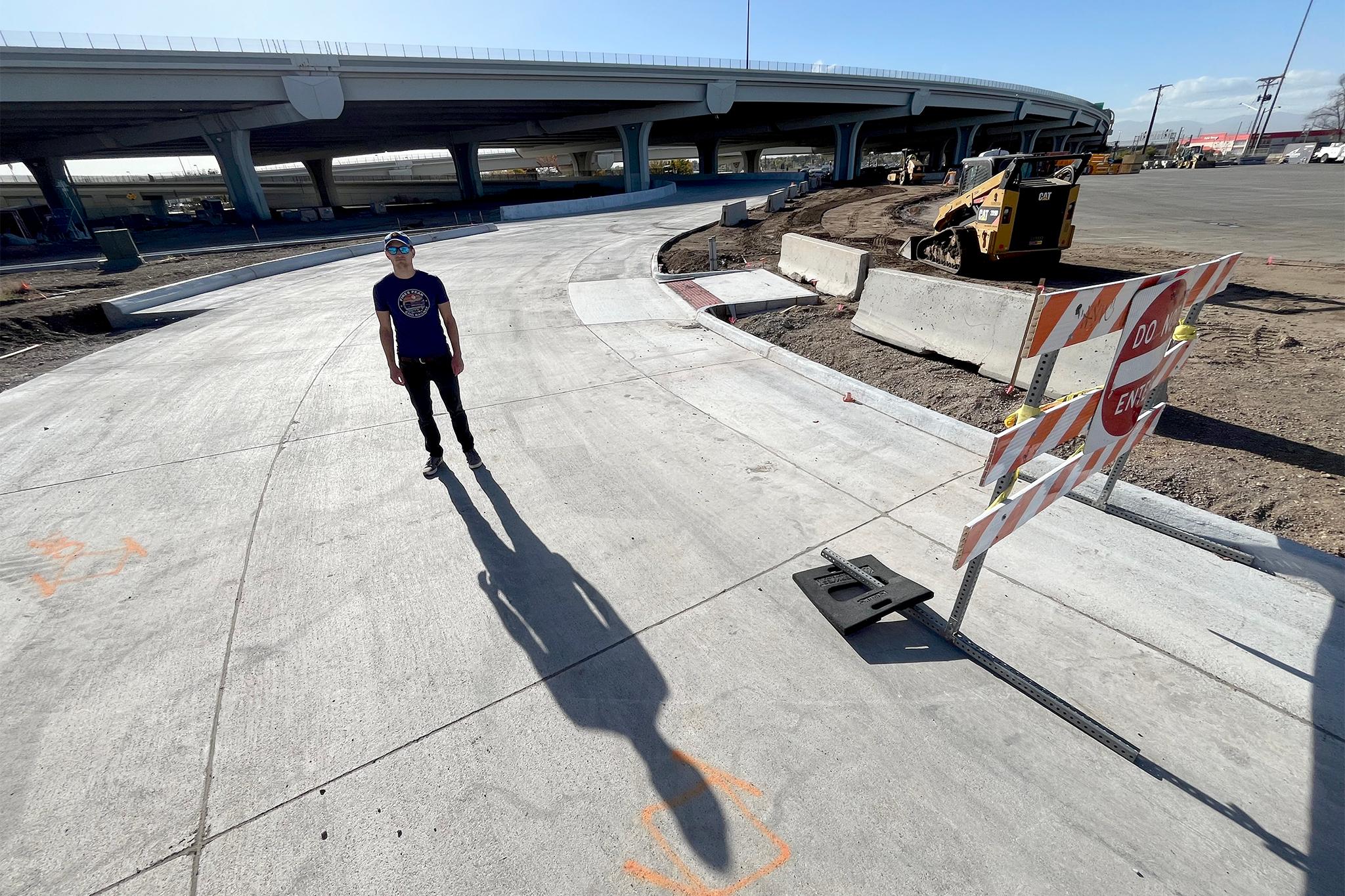It has never been easy to walk to the bus-and-rail hub at Interstate 25 and Broadway. Residents of West Washington Park already have to cross a half-dozen or more lanes of busy traffic to reach the transit station.
But it will soon get even harder for some.
Once a long-running construction project wraps up in the area, residents coming from Ohio Avenue will be directed to cross four new highway on-ramp lanes to reach the station. They’ll do that instead of taking a more direct route through a Regional Transportation District parking lot.
The redeveloping area has already seen plenty of debate over pedestrian safety in City of Denver plans. This decision, though, came from RTD. Agency officials say they opposed the more direct route because they said it could create conflicts between pedestrians and cars in its parking lot and buses in the station.
Some neighbors reject that rationale, saying RTD is simply prioritizing drivers at the busy park and ride.

“I don’t see how forcing pedestrians to cross a highway ramp is safer than using a crosswalk in a low-speed parking lot,” West Washington Park resident Ian Frasch told the RTD board last week. “RTD should be prioritizing easy pedestrian access to the station.”
RTD built its rail network largely for suburban commuters riding into downtown Denver. Most rail stations across the Denver metro are surrounded by large parking lots, some of which have never been filled. The I-25 and Broadway station has about a thousand parking spaces.
I-25 and Broadway has been under the knife for more than a year.
The city is overhauling roads and building a new on-ramp for southbound Interstate 25 to speed traffic through the area. Some residents successfully pushed the city to make the plans more pedestrian-friendly last year.
The city also recently backed off plans to demolish six homes to accommodate a now-abandoned plan for a new northbound I-25 ramp.
The city’s early plans for the area included a pedestrian path from Ohio Avenue directly through the parking lot and to the bus stops and train platform. Later, Frasch noticed the path disappeared from the city’s published plans.

A handful of neighborhood residents, including Frasch, told RTD’s board on Tuesday that they want the transit agency to restore the more direct path. In an interview after that meeting, RTD CEO and General Manager Debra Johnson said she wasn’t aware of the issue and would look into it.
Two days later, Johnson sent her board a memo that seemed to double down on its decision. The city did not consult RTD before releasing those early plans with the direct path, Johnson wrote.
RTD staff opposed the parking lot path, “for safety reasons, given the potential for contact between automobiles and pedestrians, as pedestrians would necessarily be required to cross a busy bus movement area to reach the station, and motorists’ visibility of others, including individuals in wheelchairs and children traversing the lot, may not be optimal,” Johnson wrote in the memo, which Denverite obtained via an open records request.
The city removed the direct path from its plans in 2022, Denver Department of Transportation and Infrastructure spokeswoman Cyndi Karvaski said.
“There will not be direct access through the parking lot to the Broadway station from Ohio,” she told Denverite. “That's RTD's land. If there was to be something put there, RTD would have to agree to it."
Sidewalk curb cuts are already installed on the new on-ramp, which city officials say will open by the end of the year. The entire project is expected to wrap up by spring 2026.
RTD’s board recently adopted a 'Vision Zero' resolution that aims to make its system safer — including for pedestrians.
In recent years, cities like Denver and Boulder have adopted Vision Zero plans, which set a goal of zero traffic deaths and serious injuries. The Vision Zero philosophy, which originated in Europe, also puts the responsibility for safety, first and foremost, on the designer of a system.
Part of RTD’s Vision Zero resolution calls for it to review its transit network, including busy stations like I-25 and Broadway, to identify high-risk areas for crashes.
“I think this deserves another look,” JoyAnn Ruscha, the RTD board member behind the Vision Zero resolution, told Denverite, referencing the I-25 and Broadway issue. “I am sure there’s an engineering solution here.”
Just as Vision Zero cities are responsible for the safety of their roads, Ruscha said, RTD is responsible for the safety of stations and other infrastructure.
“RTD has a chance to be that leader in the transit space," Ruscha said. "As far as I know, there's no other transit agency in the country that has their own Vision Zero plan."













